 Description of the Kemp’s Ridley Turtle
Description of the Kemp’s Ridley Turtle
(Lepidochelys kempii)
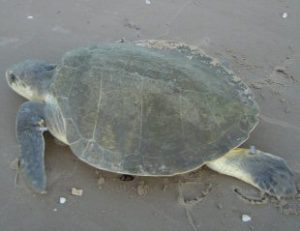 Dorsally grey in immatures, light olive-green in adults; underside white in immatures, yellow in adults.
Dorsally grey in immatures, light olive-green in adults; underside white in immatures, yellow in adults.
*source: Pritchard & Mortimier (1999)
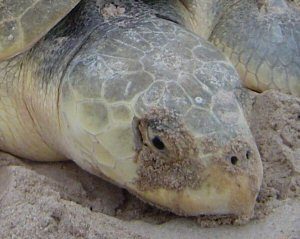
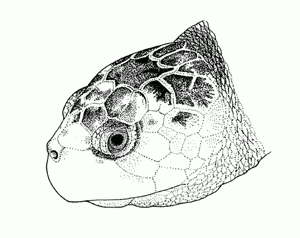 Relatively large, subtriangular with convex sides; width to 13 cm; two pairs of prefrontal scales.
Relatively large, subtriangular with convex sides; width to 13 cm; two pairs of prefrontal scales.
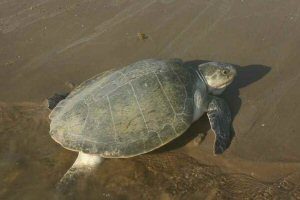
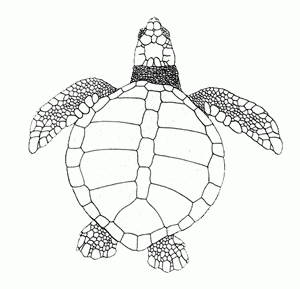 Relatively short and wide, almost circular (wider in adults than that of L. olivacea); modest marginal serration or scalloping; high vertebral projections in juveniles, but carapace smooth and low in adults; carapace scutes slightly overlapping in immatures, and non-overlapping in adults; five pairs of costal scutes; straight carapace length (SCL) to 72 cm.
Relatively short and wide, almost circular (wider in adults than that of L. olivacea); modest marginal serration or scalloping; high vertebral projections in juveniles, but carapace smooth and low in adults; carapace scutes slightly overlapping in immatures, and non-overlapping in adults; five pairs of costal scutes; straight carapace length (SCL) to 72 cm.
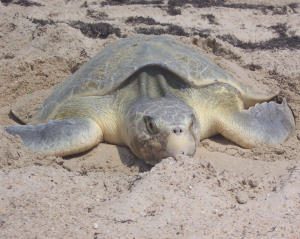
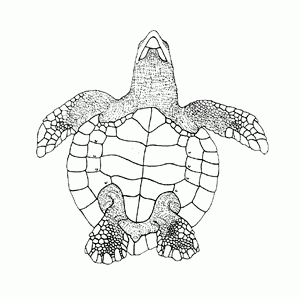 A distinct, small pore near rear margin of each of the four inframarginal scutes.
A distinct, small pore near rear margin of each of the four inframarginal scutes.